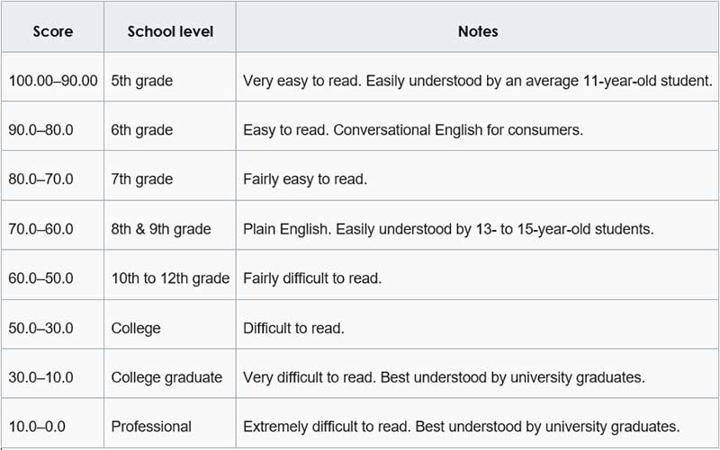
Why does it matter?
Readable content is both easy and enjoyable to read. Admittedly, that's an oversimplification, but why should you care? Nearly half of American adults can't read a book written at the 8th-grade reading level. These days content is king, but if your users can't easily understand your content, it can become a liability as it drives your customers away. Luckily, there are various ways of measuring content for reading complexity. Most are based on the length of sentences and the number of syllables in words used. Some methods are also much easier to use than others.
Flesch-Kincaid scoring
When doing a test manually, a great method for measuring readability is the Flesch-Kincaid scoring method. This method is both simple and effective at determining reading levels. It's based on the length of sentences, the number of words used, and the number of syllables used on average.

Substitute the values into the equation, and the score you come up with determines the reading level. For best results, you should aim for a score greater than 70.

Have a Look-see
Did we tell you that you can review readability with Look-see? We understand that this process is tedious and that an accurate measure of readability requires advanced algorithms. At Look-see, we use Natural Language Processing to evaluate text readability across multiple categories, including tone, sentence complexity, word commonality, grammar, and wordiness. With our automated UX audits, you can easily evaluate the content on your website for readability. Come have a Look-see!
